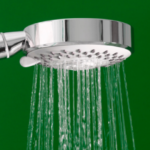Circumcision is the surgical removal of the foreskin (the sleeve of skin that covers the end of the penis) to expose the glans (head of the penis).
Most of the circumcisions performed in Australia are on baby boys. About 1 in 10 baby boys get circumcised.
Before the 1970s, the majority of baby boys were circumcised, so it is more common in older Australian men than in younger males.
Why do some people get circumcised?
Circumcision is performed for medical, cultural and religious reasons.
Medical reasons for circumcision include ongoing problems with urinary tract infections and foreskin problems, such as phimosis.
Circumcised vs uncircumcised: What are the differences?
The difference between circumcised and uncircumcised penises is primarily in their appearance and risks of sexually transmitted infections (STIs).
Circumcised males are less likely than non-circumcised males to have urinary tract infections, phimosis, paraphimosis and balanitis, or to develop penis cancer. However, many uncircumcised males never experience these problems.
Some people worry that circumcision might make sex more difficult or less pleasurable, but it does not seem to result in any benefits or disadvantages when it comes to sexual function.
What to do about circumcision
Parents, with the guidance of medical care professionals, can decide whether to go ahead with circumcision for their baby boys.
For older men, if your doctor has recommended circumcision for an existing health problem, there’s probably a good reason for the suggestion. You should talk with your doctor about any concerns you may have.












